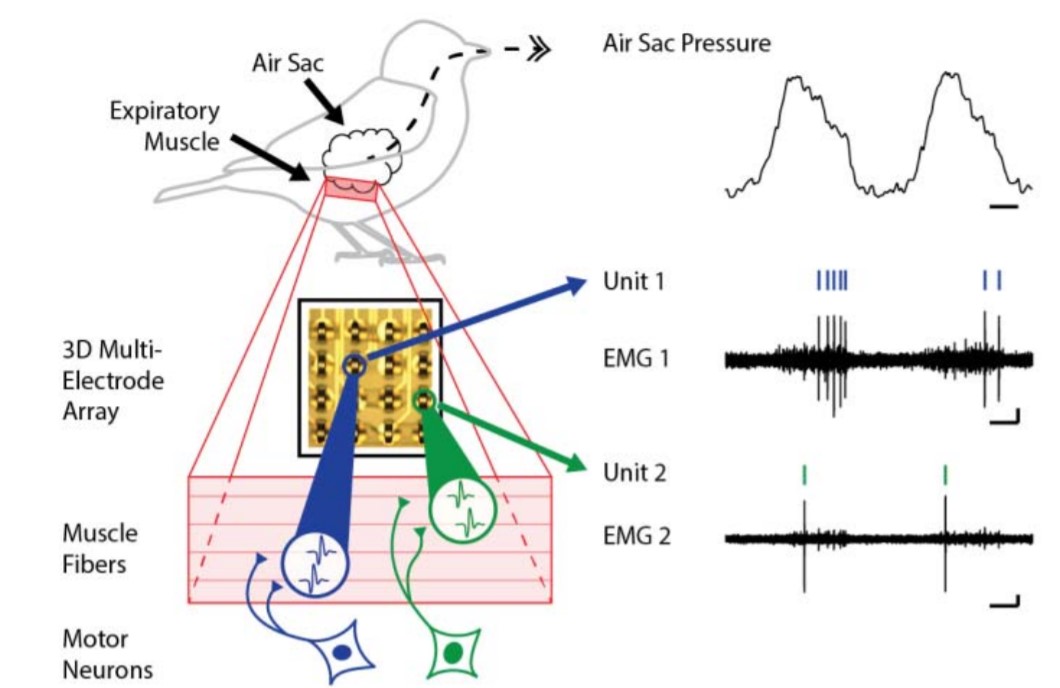Electronics for Healthcare

Evolution of data analysis methods in neuroscience in the recent past has increased our collective understanding of how a nervous system controls complex behaviors. This research focuses largely on the central nervous system, exploiting new technologies that can record large numbers of individual neurons (brain cells) for extended periods of time in order to quantify their relation to behavior. Despite recent evidence pointing to the importance of precise timing in the activity of motor units (collection of muscle fibers innervated by a single motor neuron) for controlling behavior, techniques for recording electromyographic (EMG) signals from muscles lag far behind those developed for neural recordings in the central nervous system. Specifically, most EMG data sets are collected by inserting fine-wire electrodes into the muscles. This method has several drawbacks. First, the penetrating wire electrodes damage the muscles into which they are inserted and cannot be used to record the very small muscles that control skilled behavior. Second, wire electrodes typically cannot isolate electrical signals from individual motor units, instead yield signals that represent the combined activity of many units, preventing analysis of single-unit activity (a standard approach for studying the function of neurons in the brain). Revolutionary approaches are therefore needed to record stable, single-unit, EMG activity. Here, we utilize flexible electronics, 2.5D/3D heterogeneous, photonics, and work with a team of neuroscientist to develop new micro-technologies for the neuroscience communities.
